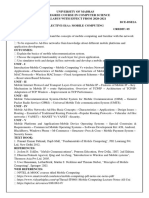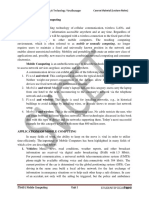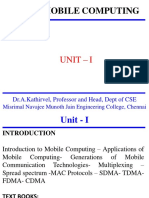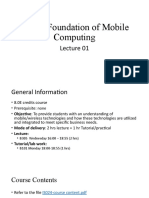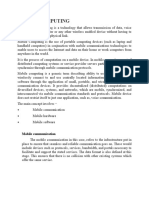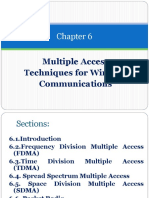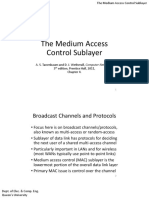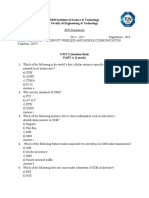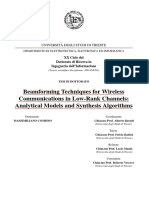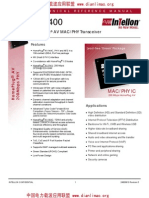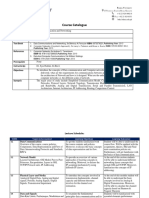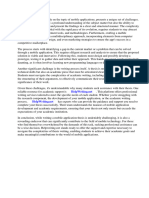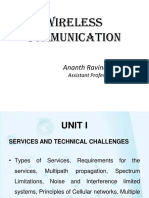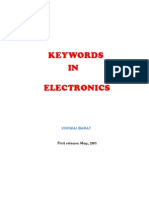0% found this document useful (0 votes)
29 views88 pagesMoblie Computing - Unit1
The document provides an overview of mobile computing, highlighting its definition, components, and applications, as well as the differences between mobile computing and wireless networking. It discusses mobile communication types, hardware, software, and various MAC protocols essential for managing shared communication channels. Additionally, it covers characteristics of mobile computing and the structure of mobile applications, emphasizing the importance of efficient data transmission and network management.
Uploaded by
keerthanacseCopyright
© © All Rights Reserved
We take content rights seriously. If you suspect this is your content, claim it here.
Available Formats
Download as PPTX, PDF, TXT or read online on Scribd
0% found this document useful (0 votes)
29 views88 pagesMoblie Computing - Unit1
The document provides an overview of mobile computing, highlighting its definition, components, and applications, as well as the differences between mobile computing and wireless networking. It discusses mobile communication types, hardware, software, and various MAC protocols essential for managing shared communication channels. Additionally, it covers characteristics of mobile computing and the structure of mobile applications, emphasizing the importance of efficient data transmission and network management.
Uploaded by
keerthanacseCopyright
© © All Rights Reserved
We take content rights seriously. If you suspect this is your content, claim it here.
Available Formats
Download as PPTX, PDF, TXT or read online on Scribd
/ 88







